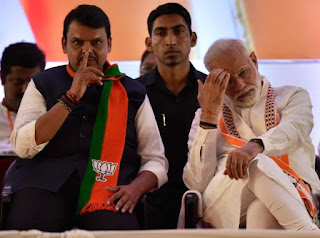Astrologically, every year around 14 January (Makar Sankranti) Sun transits into practical Capricorn (Makar Rashi in Hindi). It is the day when the Sun, a symbol of brightness, knowledge and wisdom, begins to enter into the northern hemisphere, bringing to an end the dark, cold days of winter, and ushering in the spring season.
This is a great time to reflect upon the past and make plans for your future as the Sun illumines a pathway toward the achievement of your goals. The earthy and practical drive of this sign presents an opportunity for you to make ambitions plans and really do something with them! Just like Capricorn's symbol the mountain goat, it is time to climb to the top.
According to the Hindu rituals, on the day of Uttarayani(from this day onwards lord Sun becomes 'Uttarayan' as it starts moving to the north) it is said that from this day, which signals a change of season, the migratory birds start returning to the hills.
Makar Sankranti is one of the most universally celebrated festivals in all parts of India, in varied and colourful ways. Women wear black to signify a clear night sky, with the stars shining brightly.
In the north India, On Makar Sankranti people give Khichadi (a mixture of pulses and rice) in charity, take ceremonial dips in holy rivers, participate in the Uttarayani fairs and celebrate the festival of Ghughutia or Kale Kauva. During the festival of Kale Kauva (black crow) people make sweetmeats out of sweetened flour (flour and gur) deep fried in ghee, shape them like drums, pomegranates, knives, swords etc. They are strung togather and worn as necklace-in the middle of which an oragne in fixed.
Early in the morning children wear these necklaces and sing "Kale Kauva.." to attract crows and other birds and offer them portions of these necklaces, as a token of welcome for all the migratory birds, who are now coming back after their winter sojourn in the plains.
In Tamil Nadu and Andhra Pradesh it is Pongal, in Punjab it is Lohri and Maghi, and in Gujarat people adorn the skyline by flying kites of all hues, shapes and sizes, an internationally famous event now. Makar Sankranti at core is a harvest festival, and people celebrate it by cooking festive meals with the newly harvested cereals.
As per the local tradition in Maharashtra, people exchange til-laddus made from til and jaggery as a token of goodwill, with the greeting “Tilgul ghya, god god bola”, which translates as ‘Accept this tilgul and speak sweet words’.
The under-lying message in the exchange of tilguls is to forget the past ill-feelings and hostilities and resolve to sweeten one’s speech.
Another message is to share all food, even if it be as small as a single til.
So, let’s all share tilgul with each other in a spirit of joy, festivity and camaraderie!
Happy Makar Sankranti!



Comments
Post a Comment